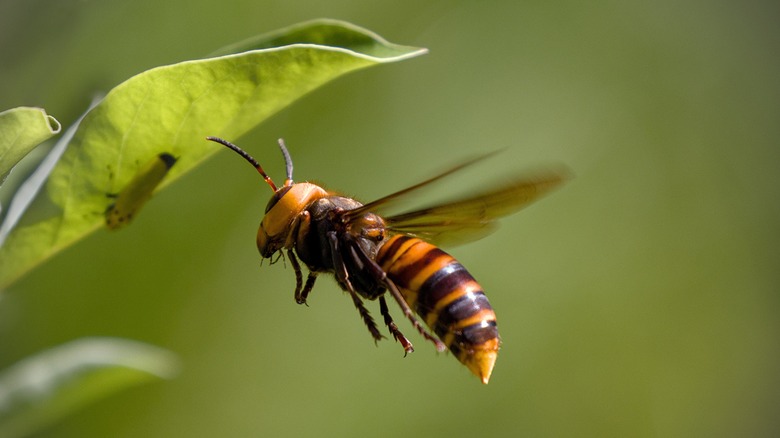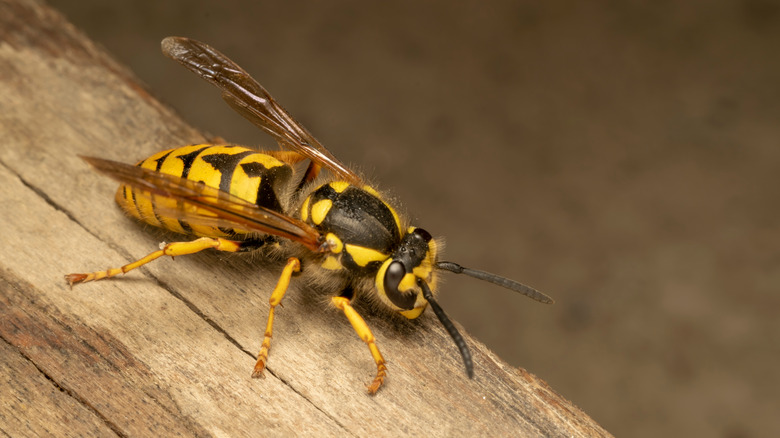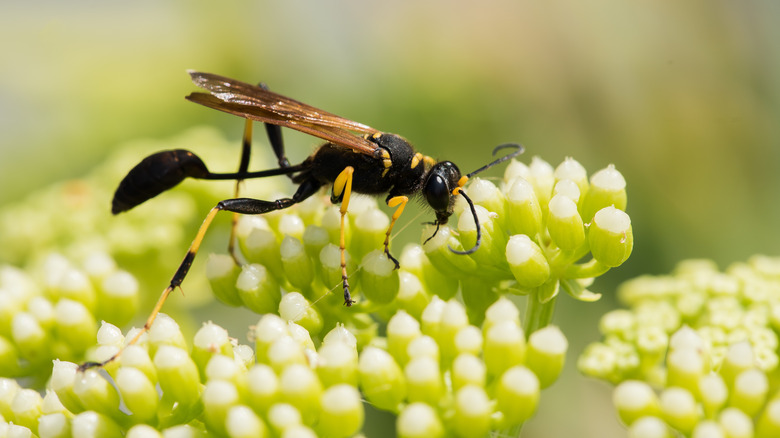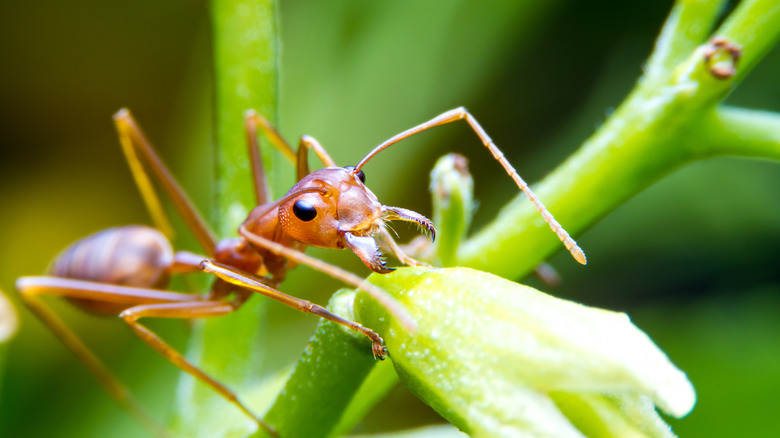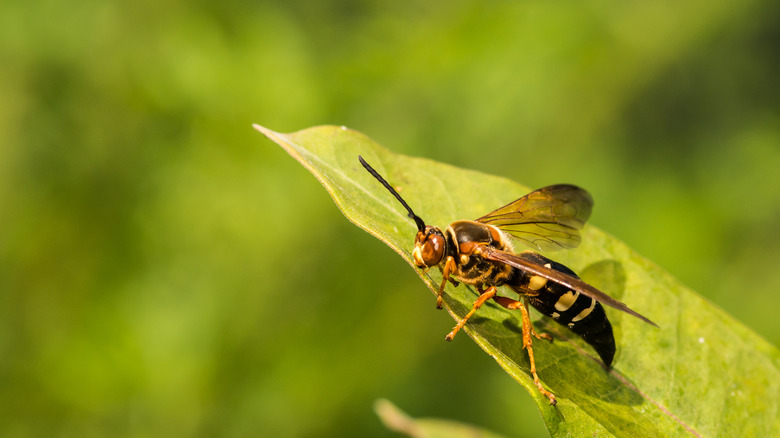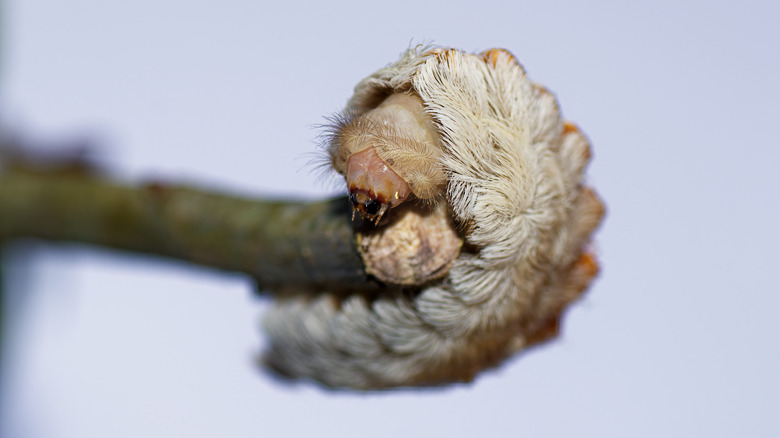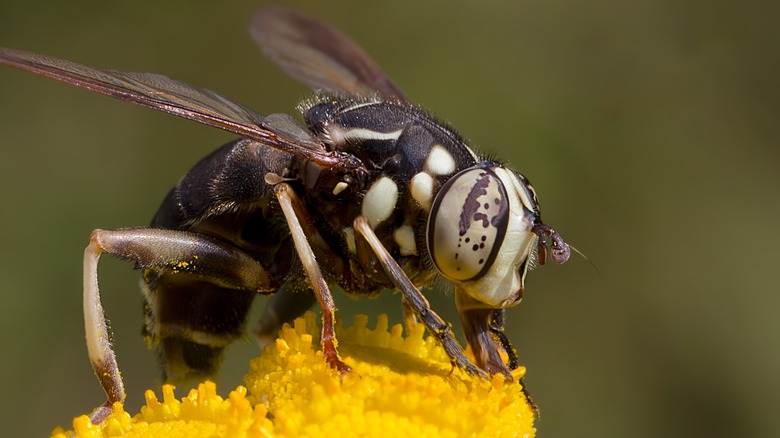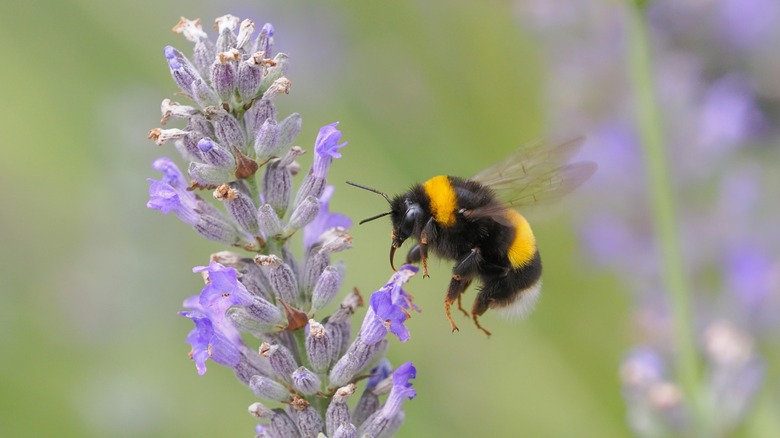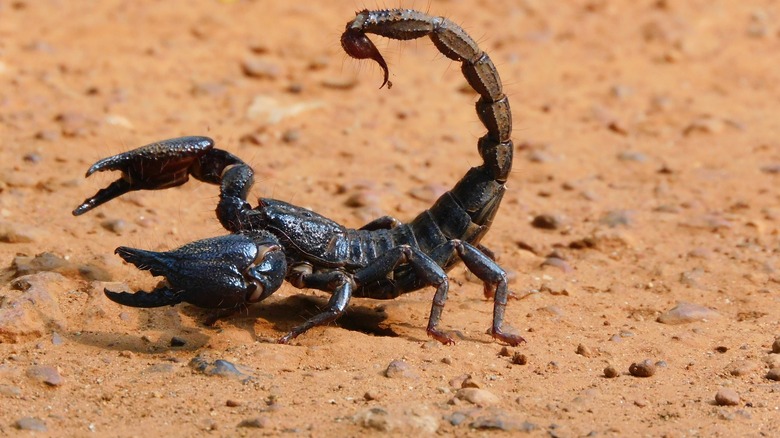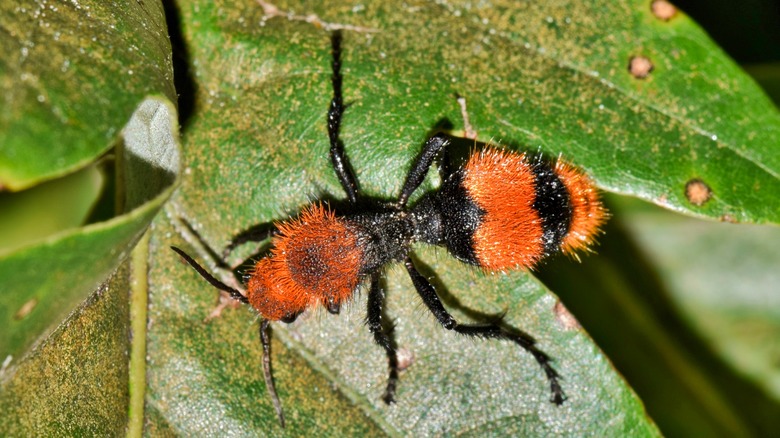9 Types Of Stinging Pests You Might Commonly See In The Garden
Gardens can be a beautiful addition to any outdoor space. Full of bright colors and unique plants, gardens attract more than just the gaze of humans. Gardens are also home to attract a variety of insects, and some of them are more intimidating than others. While there are many insects, such as horseflies, that can be a nuisance due to their bites, insects with stingers can be especially frightening. However, it is important to keep in mind that not all of these sharp-ended bugs mean harm to you or your garden.
Next time you're out enjoying (or working in) the garden, not only will you be more mindful of which insects have stingers, but you will also be armed with the information you need to determine whether or not you should keep them away. Read on to learn all about the types of stinging insects that are common in gardens.
Yellowjacket
Thanks to their bold black and yellow pattern, yellowjackets are arguably one of the most identifiable stinging pests. Found in many places across the United States, yellowjackets are part of the wasp family. They are known for their venomous sting, which can cause a variety of painful and uncomfortable side effects, such as swelling and itching. People who are allergic to yellowjacket stings may experience even more severe reactions. However, despite the fact that their stings can be very painful, these insects can actually be helpful.
Yellowjackets can be beneficial because they feed on other insects that could be harmful to your garden. That said, it's still a good idea to try to keep yellowjackets out of your garden since they're known to become aggressive quickly. Keep an eye out to ensure that yellowjackets don't build a nest. You can also help keep them away with traps . Mint is also a good deterrent for yellowjackets if you're looking for a natural solution. No matter which approach you take to expelling wasps from your garden, it's always important to act with caution when you see one.
Mud dauber
Like yellowjackets, mud daubers are also part of the wasp family. Although mud daubers can come in several colors, they are typically black or blue. They build nests out of mud and typically establish their homes on the sides of homes and other buildings. While mud daubers do sting, the good news is that getting stung by one is fairly uncommon since they tend to only become aggressive when they feel threatened.
Not only is there a low chance of mud daubers attacking you (as long as you leave them alone), but these insects can also be good friends to the plants in your garden. Mud daubers feed on the caterpillars that like to feed on your plants. Having them around means that your garden has a little extra security. So, next time you see one of these so-called pests flying around your garden, rest assured that you can feel thankful and not threatened.
Fire ant
Some people may be surprised to see fire ants on this list as some are under the impression that these tiny little insects are biters. In reality, however, fire ants have a venomous sting that can cause burning and leave behind itchy and sore welts. The ability to sting isn't the only reason fire ants are a threat, though. They can also be a problem for your garden because they feed on vegetable crops.
If you have fire ants in your garden, experts recommend getting rid of them. One method you may want to consider is pouring boiling water directly onto the ant mounds. If you choose to do this, be sure not to get any of the water on your plants as it could harm them. Other ways to get rid of fire ants include using pesticides or insect bait to attract worker ants, who will then bring the bait back into the colony and hopefully kill the queen.
Eastern cicada killer
As part of the wasp family, eastern cicada killers have translucent light-brown wings and block bodies with yellow markings. As you may have guessed by the name, the eastern cicada killer is known for being a threat to cicadas. But despite their ability to sting, these insects are not usually interested in stinging humans. Additionally, only female eastern cicada killers have stingers.
Although these pests are generally harmless to humans, they can be problematic in gardens. On one hand, they are beneficial because they keep cicadas away. On the other, their ability to burrow in garden soil can cause problems for your plants. Fortunately, it doesn't take much to keep eastern cicada killers away. Since they are not fans of moist soil, experts suggest that keeping your garden watered could be all you need to do. If that doesn't do the trick, you may want to try using an insecticide in the soil where you've noticed activity from eastern cicada killers.
Southern flannel moth
When many people think of moths, stinging is probably the last thing that comes to mind. However, during its caterpillar phase, the southern flannel moth can deliver a very powerful sting thanks to its prickly needle-like spine. While the southern flannel moth doesn't actively go after people, a person can be stung simply by handling or rubbing against one of the caterpillars. A study published by the Journal of the American Academy of Dermatology noted that these things can be "severe" and can cause "intense pain." On top of being painful, these stings can also cause harmful side effects like stomach pain, rashes, and headaches.
Even though the southern flannel moth becomes harmless once it exits its caterpillar stage and becomes a moth, experts still suggest removing it from your garden and/or yard. An insecticide should be able to drive southern flannel moths away, but if you're dealing with a major infestation, you may want to call a professional to assess the situation and provide recommendations.
Baldfaced hornet
Baldfaced hornets are easy to identify thanks to their black bodies with unique white markings, particularly on their faces and tail ends. Despite the name, this insect is actually part of the wasp family and is a type of yellowjacket. As with other kinds of wasps, baldfaced hornets are capable of stinging more than once and can be very aggressive if disturbed.
As with yellowjackets, baldfaced hornets feed on insects that may be harmful to your garden. But since they are likely to sting humans, it is usually a good idea to keep baldfaced hornets away. The best method is to use a spray designed to target wasps and hornets and apply it to their nest. Mornings tend to be the best time to make your move. The spray will kill any baldfaced hornets that are in the nest, which will allow you to remove it. Be mindful that some baldfaced hornets may attempt to return and rebuild the nest.
Bumblebee
Bumblebees are probably one of the most beloved stinging pests. Although it is possible for them (only females) to sting, they generally do not bother humans unless they are provoked. On top of that, bumblebees can do wonders for your garden. In fact, unlike some of the other pests on this list, bumblebees are one insect that you will actually want to see more of.
Instead of working to keep bumblebees away from your garden, it's a good idea to find ways to attract them as well as other pollinators. Bumblebees are responsible for pollinating the majority of plants and can help your garden bloom like never before. In addition to being good for your garden, bumblebees are good for the environment as a whole. Certain types of flowers, including Dame's rocket and coneflowers, are known to draw bees in. Incorporating nesting areas into your garden is also another good way to attract bees.
Scorpion
In the United States, scorpions are most commonly found in the southwestern part of the country. Even though there are around 40 different kinds of scorpions, all of them are capable of stinging. While you may be tempted to exterminate a scorpion as soon as you see one, it's important to note that not all scorpion stings are equal. While some scorpion stings can be deadly, others will only cause mild pain and/or irritation.
Despite the varying levels of danger, if you see scorpions in your garden, it's a good idea to get rid of them. While they do a good job of keeping other kinds of pests away, scorpions do tend to sting when they are provoked, which is something you can easily do accidentally while walking through your garden. Keeping your garden (and the rest of your yard) neatly manicured is one of the best ways to get rid of scorpions because it leaves them with fewer hiding places.
Red velvet ant
Not to be confused with fire ants, red velvet ants actually aren't ants at all; they're wasps. Female red velvet ants are the only ones that can sting and resemble ants due to their wingless bodies, which are black with reddish/orange hair that resembles velvet. A sting from a red velvet ant can be painful and cause swelling and irritation, but fortunately, they only tend to sting when they are threatened.
Since red velvet ants eat nectar and not plants, they shouldn't cause any problems in your garden. That, in combination with the fact that they are not very likely to sting, means they don't pose any real threat to you or your garden. On top of that, red velvet ants don't usually live in groups, so even if you see one or two in your garden, it's very unlikely that you'll end up with an infestation.
